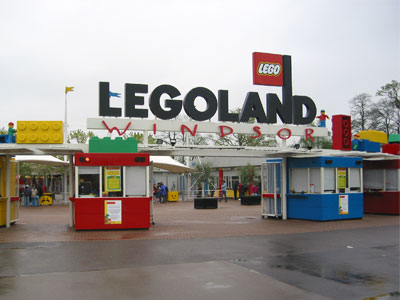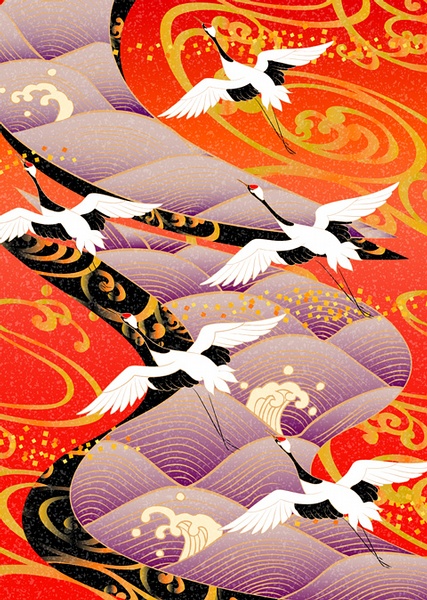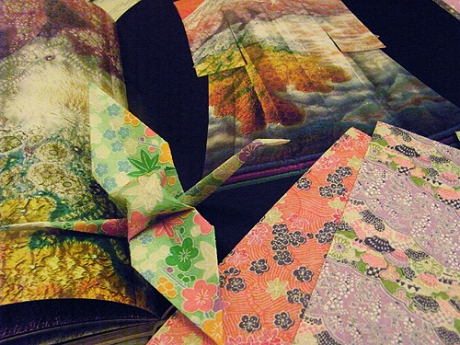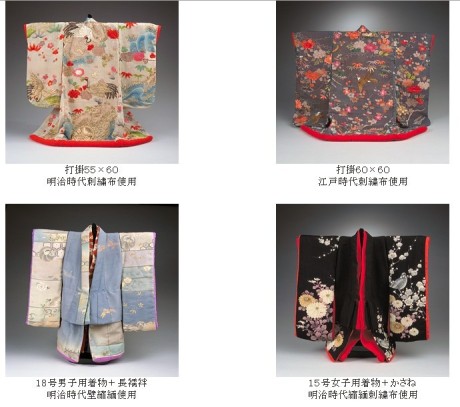Eastern philosophicy, Creativity, Clothes & LEGO
May 1, 2010
It is well-known that LEGO is a line of construction toys manufactured by the Lego Group, a privately held company based in Billund, Denmark. The company’s flagship product, Lego consists of colorful interlocking plastic bricks and an accompanying array of gears, minifigures and various other parts. Lego bricks can be assembled and connected in many ways, to construct such objects as vehicles, buildings, and even working robots. Anything constructed can then be taken apart again, and the pieces used to make other objects. The toys were originally designed in the 1940s in Europe and have achieved an international appeal, with an extensive subculture that supports Lego movies, games, video games, competitions, and four Lego themed amusement parks.
The Lego Group began in the workshop of Ole Kirk Christiansen, a carpenter from Billund, Denmark, who began making wooden toys in 1932. In 1934 his company came to be called Lego. It expanded to producing plastic toys in 1940. In 1949 Lego began producing the now famous interlocking bricks, calling them “Automatic Binding Bricks”. These bricks were based largely on the design of Kiddicraft Self-Locking Bricks, which were released in the United Kingdom in 1947. Lego modified the design of the Kiddicraft brick after examining a sample given to it by the British supplier of an injection-moulding machine that the company had purchased. The bricks, manufactured from cellulose acetate, were a development of traditional stackable wooden blocks that locked together by means of several round studs on top and a hollow rectangular bottom. The blocks snapped together, but not so tightly that they required extraordinary effort to be separated.
Firstly intended as a toy for children, LEGO created a legend that enjoyed by people around the world regardless of age and gender. It is a game basic on building and piling bricks up, well exhibits the style and essence of western constructions.
On the other hand, looking at the differences of style between classic Eastern and Western architecture, we can see each has distinct features and strong point. (e.g. eastern buildings generally use wood as material and western ones use stone, more fundamentally, the former emphasize culture and the arts more, while the later on science and religion.) Is there a way of bringing eastern philosophy into a creative DIY toy like Lego that looks basic but can create infinite possibilities?
(Some historical eastern creative game kit that strongly stimulates the logical and intellectual development.)
Adding to the previous study of kimono and its philosophy connected to craft, origami, Japanese architecture and creative DIY, I hope to design an educational toy(maybe use clothes as medium and drawing as element) that can benefit children and maybe one step further all people who play with it.
Printing, Pattern, Paper, Play….:)
February 25, 2010
When professor asked us to push out 50 ideas concerning our final project using creative card and stuff.. that really forced me to break stiff mind-set and come up with some interesting thoughts. for instance, instead of thinking how to modify traditional craft with modern technology, think backwards:
– What can we learn from old technique, and apply in modern art or design practice?
take kimono textile printing for example, most of the exquisite and complecated image was composed of repetitive pattern printed and dyed several times using different color and combination (reminded by professor Frances Stevenson, kinda like photoshop brush and layers)
this printing technique can be more easily observed in the making of Chiyogami, a kind of precious japanese paper,(memo for future study: why can paper making always be linked with cloth and textile…)
this origami crane (the same as the page image) was made by chiyogami paper given by professor Kumilo from Yamakuchi prefectural university in Japan.
you cansee that the image was basically composed of “background”(背景用文様), “gradation”(ぼかし染め文様), pattern” (白抜き文様) and “icon”(和風アイコン)
this website explians how it works quite visually: http://yokohama.cool.ne.jp/alisato/chiyo/
the reason that those combinations can conjure an image that is sophisticate but not messy, I think, may because the harmonious color arrangement. (memo 2: somaybe it can beused as an education tool for people to learn about color theory or try things out… )
anyway, these are some modern design using the same fomula, just replacing the traditional objects with new one, still worked quite well!
Japanese pattern designer and illustrator Aya kato can be viewed as a master of using brush and layer to create astonishing beauty. nearly all of the objects in her painting are used more than once but never appear to be repeative.
in a nutshell..和の色を千代紙に学びましょう
こういう「和」の情景を切り取って、暮らしに取り込めるようにしたのが、千代紙です。「和」の色を絶妙なコンビネーションで組み合わせ、伝統的な柄や文様をアレンジした、美しい千代紙たち。
私が子供の頃には、たいていの女の子は千代紙をコレクションしていました。仲良しの子に気に入りの千代紙を贈ったり、友達同士で交換したり。その千代紙を 使って、姉さん人形を作ったり。そうやって私たち日本人は、色彩感覚や、柄、文様に対する美意識を磨いてきたのでしょう。
着物を着ると時の、あの独特の色使い。半衿や帯揚げ、着物と帯、羽織や足袋などなど、洋装とはまったく異なる、色と色、柄と柄のコーディネートは、こうした千代紙遊びからその修養が始まっていたのかもしれません。
a little knowlege about chiyogami
ORIGAMI DISCOVERS CHIYOGAMI
by Kimberly Crane
Chiyogami is a type of Japanese paper decorated with brightly colored, woodblock-printed patterns. Used today for a variety of handicrafts, such as covering small boxes, origami, and making kimono for paper dolls (anesama). Ukiyo-e artists first produced Chiyogami in the late 18th century. The word is a combination of chiyo (literally, “a thousand generations”) and kami (gami), or paper, and has auspicious connotations similar to those evoked by the pine, bamboo, and plum-blossom motifs with which it is often printed. Pine and bamboo trees remain green throughout the coldest weather, while winter-flowering plum trees bloom even when their branches are decked with snow, thus giving hope to mankind during the bleakest season of the year. Combinations of cranes and tortoises are popular, because these animals have always served as emblems of long life and happiness.
As anesama began to flourish at a time when ornamental paper was increasingly regarded as a necessity; in return, the influence of anesama upon chiyogami became apparent. One direct result was the enormous number of miniature adaptations from standard all-over fabric patterns, such as stripes, plaids, dots, or other geometric designs, and floral scatter prints. The origami folder of today need only walk into a modern fabric store and glance around at all the wonderful fabric patterns and think of how the patterns would look on a piece of paper. Perhaps this accounts for a small part in the growing popularity of fabrigami.
During the Edo period (1603-1867), chiyogami was an outcome of the many established papermaking centers throughout Japan. It was the paper of choice by many who could not afford the beautiful washi papers. Like washi paper, its popularity spread from Kyoto, to Edo (modern Tokyo), and Osaka. It is from these three main cities that it is still being manufactured and sold by a handful of woodblock printers.
For the origamist of today, chiyogami has caught the attention of the prospective folder who does not want to pay a hefty price for attractive and foldable paper. Like in times past, chiyogami continues to remain the choice for the origami folder when compared to its rich cousin – washi paper.
Chimatsu Dolls 市松人形
February 6, 2010
A Traditional Japanese doll made by Master Kyousyu, the technique involved is highly complecated and ingenius skill is needed. As a result, the price is not cheap.
chimatsu dolls (ja:市松人形) represent little girls or boys, correctly proportioned and usually with flesh-colored skin and glass eyes. The original Ichimatsu were named after an 18th-century Kabuki actor, and must have represented an adult man, but since the late 19th century the term has applied to child dolls, usually made to hold in the arms, dress, and pose (either with elaborately made joints or with floppy cloth upper arms and thighs). Baby boy dolls with mischievous expressions were most popular in the late 19th and early 20th century, but in 1927 the friendship doll exchange[1] involved the creation of 58 32″ dolls representing little girls, to be sent as a gift from Japan to the United States, and the aesthetic of these dolls influenced dollmakers to emulate this type of a solemn, gentle-looking little girl in elaborate kimono.
antique kimonos made for the dolls.
reference











